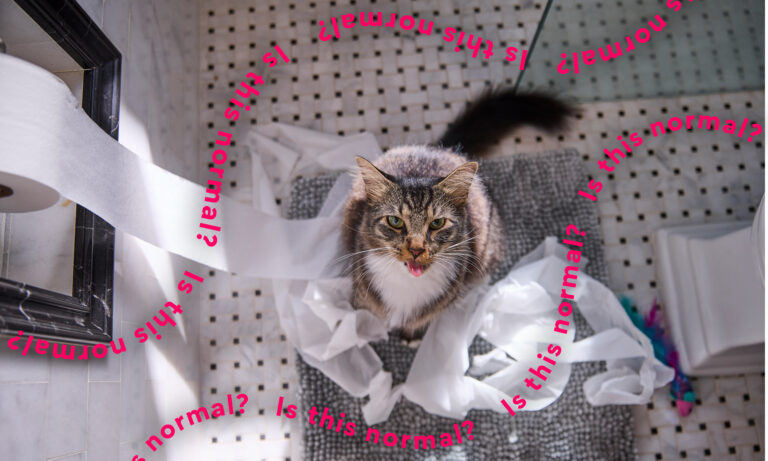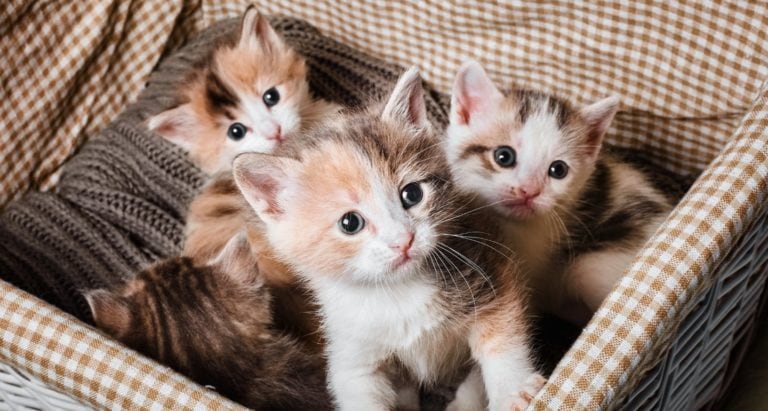Can You Domesticate a Feral Cat?
No matter where you live, odds are that there are community cats in your midst. The American Society for the Prevention of Cruelty to Animals (ASPA) uses the term “community cats” to encompass all unowned cats living outdoors. They might include house pets who have been abandoned or got lost, as well as cats who are semi-cared for by one or more residents. All such stray cats are at least partially socialized, approaching people for food, meowing or even purring. But what about feral cats?
What Is a Feral Cat?
There are stray cats, and then there are feral cats. What is a feral cat? Feral cats have lived their whole lives outside with no real human contact. They think people are large predators and act accordingly.
Seeing a cat living outside in cold weather, or in a heavily trafficked area, can be heartbreaking—so much so that you may start thinking about adopting a feral cat.
Domesticating feral cats is not for the faint of heart. But depending on the cat’s age (the younger, the better), personality and experiences on the street, socialization may be possible. But make no mistake—even in best case scenarios, it will take time and patience. “The sociability level of the outdoor cats who show up in our lives truly runs the gamut, with a variety of factors—most of which remain a mystery to the person who invites a cat indoors—playing a role,” says Peter J. Wolf, national cat initiatives analyst for the Best Friends Animal Society, a national animal welfare organization. Determined to try to give feral felines a home? Here’s advice on whether and how to tame a feral cat.
First Things First
Do not approach a cat that seems sick (no matter how sorry you feel for him) or if they are acting out of the ordinary. A cat who always bolts if you get closer than 30 feet suddenly showing up at your back door has not decided he loves you—it’s far likelier that he has rabies. In situations like this, call local animal control. If you are bitten or scratched, go to a doctor to have the wound checked and treated.
Start With Reasonable Expectations
“When I’m asked whether feral cats can become pets, I always reply, ‘That depends on what you mean by pet,’” says Wolf. He explains that a feral cat might bond closely with their “one person,” but will forever run from everyone else. “Of course, her circle of human friends might be widened with increased exposure to others, especially if those involved are willing to be patient. Socializing an adult feral cat… requires reasonable expectations.” A feral cat, Wolf emphasizes, might never become a lap cat, no matter how much love is showered upon him. If that’s what you have in mind, then adopting from a shelter is often a better idea than making an attempt at domesticating feral cats. As a rule, shelters do not put feral felines up for adoption, so adopting a feral cat from an organization is not generally an option.
How to Tame a Feral Cat
One word: cat food. Food is how wild cats became domesticated in the first place: they figured out that hanging around humans equaled regular meals. So successfully taming a feral cat in your neighborhood will begin by establishing a routine around food. Feed the cat at the same time and in the same spot every day. Don’t make eye contact with him when you see him; cats can take that as threatening. Sit or stand quietly nearby and just ignore the cat as he eats. Once that’s going well, you can talk to the feral cat in a calm, soft voice. The hope is that the cat will start to trust you. Once you sense that he does, move the food a little closer to you each day. Of course, offering a few cat treats along with food can’t hurt. Halo Liv-a-Littles 100% Wild Salmon Cat Treats are a great option because they are freeze-dried, which means they can be broken up easily.
Don’t attempt to touch the feral cat until you are at least fairly confident, judging from his day-to-day reactions to you, that he’ll allow it. If he backs away, stop and wait a few days before trying again. Take care not to make sudden movements. Let him sniff your finger before trying to stroke his cheek. Once the cat seems comfortable with touch, then you can move on to petting. If this is success, you can try gently picking him up. Be prepared for weeks of diligent effort, if not months, to get to this point.
Before bringing the cat into your house, especially if you have other cats, you must take him to the veterinarian for a full checkup and vaccinations, and of course, to be neutered or spayed. You’ll need to have built up enough trust with the cat to be able to get him into a crate for the trip. This may take several tries, but this step can’t be skipped when taming a feral cat—for your sake as well as his.
Bringing Home a Feral Cat
When, at long last, your cat has gotten the all-clear from the vet and you are officially bringing him into his new home, have a special room set aside for him. It doesn’t need to be big, but it should be quiet, and temporarily, at least, not used for any other purpose. Install a few small safe places, like cat trees and towers. The Frisco 72-Inch Cat Tree has two built-in private snoozing spots, as well as plenty of opportunity for climbing and checking things out from above. For small spaces, the Frisco 28-Inch Cat Tree does the trick, while still providing a hideout spot.
Being able to hide in his own space will help your cat relax. Respect your cat’s safe places and keep your interactions brief until your cat seems comfortable with his new surroundings.
Aside from his hiding spots, your cat will need, of course, a cat food bowl and water bowl (the Necoichi Raised Cat Water Bowl is marked on the inside, so you can be sure your cat is drinking enough during her first days inside), and a cat litter box. Don’t worry. Somehow, even cats who have never used one before get with the program pretty quickly. The Van Ness Litter Box has high sides to help contain the litter. If you have a potted plant in this room, either remove it, or cover the dirt with aluminum foil, since your cat may look upon it as a second litter box.
Lastly, you’ll need a scratching post so the cat doesn’t turn his instinctual scratching behavior towards your furniture. Rub the post with a little catnip to attract his interest.
Should You Domesticate a Feral Cat?
Under what circumstances is a feral cat better left outside to fend for himself? “It’s tricky,” admits Wolf. The mindset of wanting to rescue a cat simply because he’s living outdoors can result in community cats taken from a neighborhood where they’re cherished (often with more than one household caring for them).
And then there’s the fact that there are cats, in some circumstances, who do just fine living outdoors. Wolf has been caring for four cats on his patio for more than 5 years, yet has never touched any of them. “I don’t know that these cats would want to be indoors. They’ve got a pretty good gig, after all: food, water, shelter, the company of one another and plenty of the kind of enrichment that comes from being outdoors. Yes, there are risks—on balance, though, I think my decision is best not only for them, but for me and my own indoor cats.”
While Wolf allows that he might reconsider his stance if, for instance, one of the cats became injured, his best advice is this: “Proceed very slowly, and remain mindful of what’s best for the cat.”

Christina Vercelletto is a pet, travel and lifestyle content specialist and a former editor of Parenting, Scholastic Parent & Child, and Woman’s Day. She lives on Long Island with her Chiweenie, Pickles, and 20-pound Calico, Chub-Chub.
Share:














